Ahiflower: A Regenerative Solution for Omega-3 Supplements?


The global omega-3 supplement market reached new heights in 2019 and isn’t expected to slow down with a projected 7.4 percent annual growth rate through 2024. Consumers are looking to omega-3 supplements to address their health concerns, such as arthritis, cholesterol and ADHD (Attention Deficit Hyperactivity Disorder).
However, consumers are becoming increasingly aware that the current business-as-usual approach of the reduction industry (the industry that processes fish for supplement oil) is unsustainable. One study reported that global demand for fish-free omega-3 supplements, including algae-based oil supplements, is accelerating at 9 percent annually, while another study found that 69 percent of U.S. supplement users' purchases "were influenced by sustainability factors."
"The interest is shifting from the type to the source of omega fatty acids across the health-conscious consumer base around the world, which is shaping the future of the market for plant-based omega-3 ingredients," a Transparency Market Research study reported.
This shift is crucial since the reduction industry processes 25 million metric tons of fish annually, usually those species described as “bottom-feeders,” to produce oil for 83.5 percent of omega-3 supplements—diminishing food sources for fish and marine mammals and threatening those at the top of the food chain.
Nature's Crops International sees Ahiflower as the crop to stop the reduction industry
Enter Nature's Crops International (NCI), a fatty oils manufacturer that partners with thousands of farmers to grow specialty crops, including Ahiflower—an oilseed crop with more than four times the omega-3s found in flaxseed. NCI views Ahiflower as the crop that can curb global reliance on fish-oil omega-3 supplements.
During a presentation at the Regenerative Earth Summit, a two-day conference that brought together leaders in the circular economy and regenerative agriculture, NCI CEO Andrew Hebard explained his company's long-term goal is to grow 1 million acres of Ahiflower.
"If we can get anywhere close to our goal, we'll take a huge amount of pressure off the oceans where we are somewhat indiscriminately harvesting these forage fish to grind up for the omega-3 industry," Hebard explained to TriplePundit.
Currently, 50 farmers, located mostly in the United Kingdom, partner with NCI to grow Ahiflower. NCI teaches its farmers how to incorporate regenerative growing practices, such as promoting biodiversity on their farms and maintaining continual ground cover. NCI also enters into “holistic partnerships” with farmers instead of buy-sell agreements, which means price stability and continuous support for farmers, Hebard said.
New science and applications should catalyze Ahiflower’s growth
The exciting news is that regenerative Ahiflower production is scalable. Not only does one acre of Ahiflower produce as much oil as 40,000 mackerel or sardines, it can also fortify food. NCI entered into a partnership with Blue Pacific Flavors to incorporate Ahiflower oil into plant-based milk alternatives and nutritional desserts, expanding Ahiflower oil’s applicability.
The biggest challenge to accelerate demand is educating consumers that Ahiflower omega-3 supplements have a similar chemical composition as fish-based omega-3 supplements and can offer the same health benefits. Hebard remains optimistic as more studies surface that prove Ahiflower’s value.
"There's some really interesting science emerging about how plant-derived omegas are metabolized, and we feel this will give consumers a lot of confidence knowing their nutritional requirements can be obtained from good plant sources," Hebard told Danielle Masterson of NutraIngredients.
Image credit: Fornax/Wiki Commons
Veterans Help Us Be Our Best


By Laura Knutson
Imagine you sign up to serve your country at age 18. You go to boot camp and push your physical and mental limits to an extreme. You spend years on a ship. Maybe you serve in a war zone.
You come home, start a family, get deployed again. Months later, you’re back at your local grocery store, trying to readjust to an old lifestyle that’s suddenly foreign.
To many veterans, this transition back to the civilian world is no easy feat. And at the core is finding a job that fits, which can be the biggest hurdle of all.
At General Mills, we’re proud to employ and support hundreds of veterans and transitioning military members in the U.S.
We spoke with several veterans throughout the company to find out what made them successful in the workplace; discipline and collaboration were common themes.
Teresa Viola is based at our headquarters in Minneapolis, Minnesota. She works on our supply chain team, using her experience from the U.S. Navy. Hear from her in this video.
We also caught up with three veterans working at our Albuquerque, New Mexico plant. Watch videos featuring Russell Holloman, Andrew Amador and Jim McGonigle.
When talking with our employee veterans, our Veterans Network came up a lot. This is a special community within General Mills that provides mentorship for veteran applicants and new hires, ongoing support that’s tailor-made for veteran employees and their families, and volunteer work with community programs, like Tee It Up for Troops.
Joel Stamp is the president of the General Mills Veterans Network, and has been an active member of the Army National Guard for more than 20 years. He told us about how the veterans network began and grew throughout the company, in this audio clip.
Our Veterans Network encourages honest conversation on difficult cultural topics – like mental health and the Take a Knee movement – to build a truly supportive and inclusive environment.
Efforts like these are why we’ve been awarded a VIQTORY Military Friendly company for seven years, and, for the first time this year, a Best Corporation for Veterans Business Enterprises by the National Veteran Owned Business Association for our work with more than 70 veteran suppliers.
Pat Higgins rose up the ranks in the U.S. Army to become a tank platoon leader and intelligence officer, and then worked his way up at our Wellston, Ohio, plant to lead a processing line making Totino’s Pizza Rolls.

While at General Mills, he was called to deploy, and when he told his manager, “There was not a single question asked outside of, ‘How can we support you?’.”
In fact, Higgins’ manager stayed in touch with him through his deployment, and his fellow employees frequently checked in on his two young kids and expecting wife. And he received plenty of care packages with his favorite snack, LÄRABARs, while serving abroad.
Aimee Mortenson, a research and developer for Lucky Charms, had a similar experience, but from a different viewpoint.
Her husband, who doesn’t work at General Mills, never expected to get deployed based on the nature of his military role. But he was called for duty suddenly, and at a time when they were caring for a little one at home.
“My co-workers have been as close as family helping me get through this tough time, offering to mow my lawn, shovel my driveaway, get my groceries, babysit. As a new mom, all these small acts have been a game-changer while my husband is away. And General Mills’ workplace flexibility has enabled me to balance the load,” says Mortenson.
On this Veterans Day, we salute our veteran employees, and their families, and give thanks for their work at home and when away.
Laura Knutson is a corporate communications associate in Global Communications at General Mills, based in Minneapolis. She supports initiatives for business and financial communications. She began her career at General Mills in 2016.
Previously published on the Taste of General Mills blog and the 3BL Media newsroom.
Image credits: General Mills
Four High-Tech Companies Unite to Buy Wind Energy in Texas
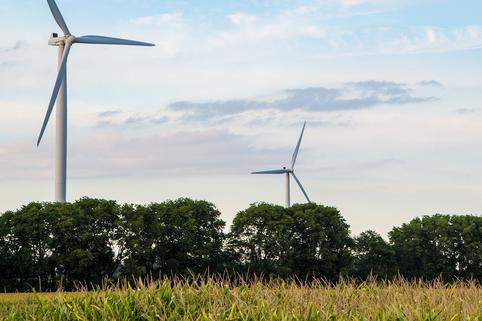
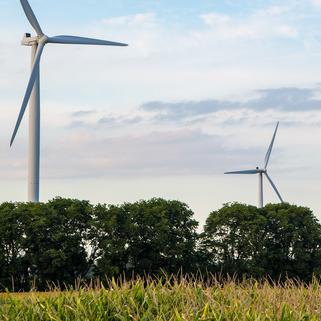
The corporate sector is pushing renewable energy full steam ahead into the next phase. Apple, eBay, Samsung Austin Semiconductor and Sprint have announced a joint agreement to purchase power from a new wind farm in Texas owned by Apex Clean Energy. The wind farm, roughly located midway between San Antonio and El Paso, is expected to come online in 2021. A partnership like this, from several companies with offices in the Austin metro area, is an innovative way for companies to pool their energy demands and support larger-scale renewable energy projects. It brings down the cost to each partner company and enables more renewable energy to be brought onto the grid.
The 500-megawatt White Mesa Wind project is expected to begin operations during 2021 in Crockett County, Texas.
Apple also recently announced plans to open a new $1 billion office in Austin, a decision that will bring 15,000 jobs to the region. The tech giant already powers 100 percent of its global operations with renewable energy; for this project, Apple reached out to the other business partners to join its pursuit of additional renewables investment in Texas. Hence this strategy fits well with the other tech companies’ commitments; for example, eBay aims to reach 100 percent renewable energy at its offices and data centers by 2025.
In addition to bringing that additional 500 megawatts of wind power to the Texas grid, this investment by four market-leading brands focuses more attention to renewable energy’s potential. Though Texas is the top wind energy-producing state in the country, state lawmakers have repeatedly tried to limit its reach. Solar has only recently become a player in Texas despite the state’s vast capacity for this source of power. This increased deployment of solar is due more to market forces, including the drop in the price of solar compared to coal and natural gas, as well as the reality that coal no longer makes economic sense. Investments like the one announced by these companies will only help drive costs down further.
The investments Texas has made in renewables may not generate big headlines when compared to other states like California. This news may even make some clean tech advocates on the west coast yawn. After all, the Golden State has stood out by setting statewide policies to achieve higher renewable energy penetration rates as well as greenhouse gas emission reductions targets. This new Texas wind farm project, however, is a step in the right direction.
But Texas, though many citizens are proud of its wind energy sector, is not typically a champion of environmental solutions at the state leadership level. In fact, the top government leaders in Texas have been vocal in their opposition about taking on climate change. Despite being on the frontline of climate change—from droughts to floods, from hurricanes to heat waves—the conventional energy sector, based largely in Houston, has overall resisted calls for greater investment in renewable energy.
Nevertheless, change is occurring at the local level across Texas. And here is where the corporate sector, along with cities, is changing the face of energy in the state: All the major Texas cities have either set climate goals or are in the process of setting them, and those same cities welcome corporations who align with those goals. The high-tech sector, centered in Austin, which is affectionally called “Silicon Hills," has more incentive than many other industries to invest in renewable energy, given their emissions footprint due to operations such as data centers, which have a very high electricity demand.
In the absence of political leadership in taking action on climate change, particularly when it comes to investments in renewable energy, corporations are stepping in to fill the void. High-profile technology companies have the potential to make a difference in the states where they operate, and this announcement shows that they are seizing such opportunities.
Image credit: White Mesa Wind
The Circular Economy – Lessons from the Past for a Sustainable Future
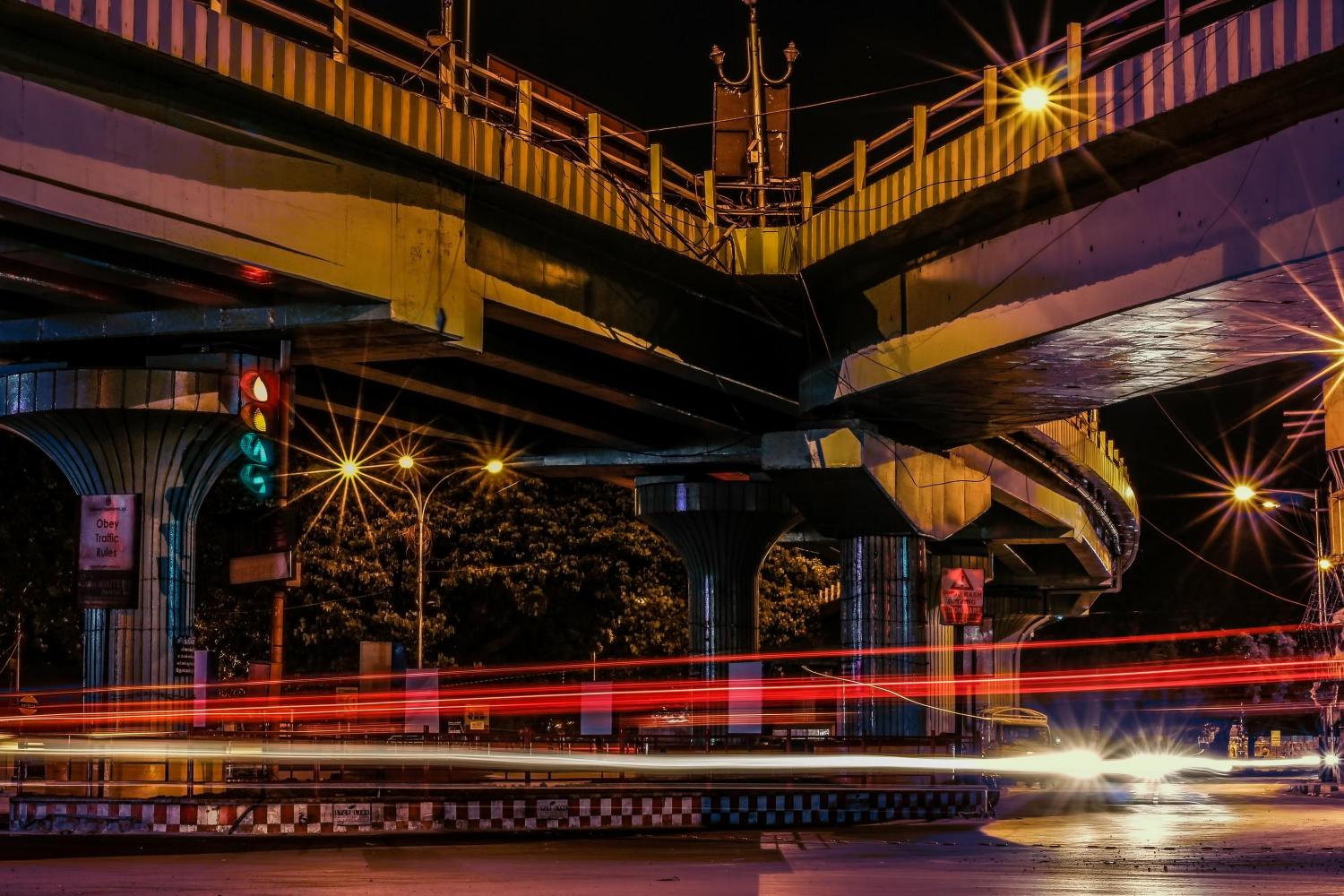
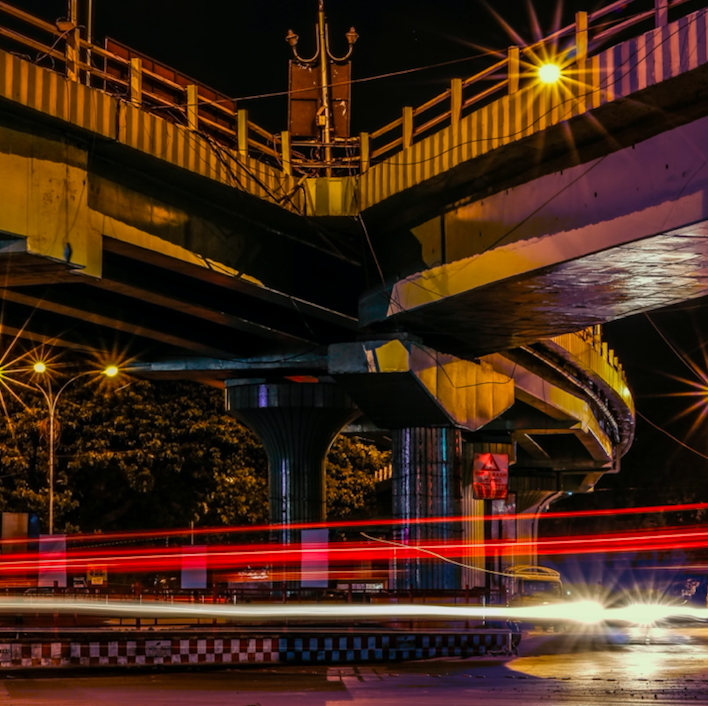
It wasn’t always like this. For much of human history, people lived sustainably, following the circular pattern of the seasons. In the Bronze Age, recycling as we know it today was first practiced as metalwork gave way to the use of stone in tool making. Stone Age flint tools were made from old hand axes and old pottery was ground down to reuse in clay for new pots. Practices at the core of a circular economy, such as repairing, recycling, refurbishing or repurposing, are as old as the use of tools. Somewhere, mankind's need for ever-expanding markets and raw materials has set us on a path to destruction.
The industrial revolution in the late 18th century irrevocably reshaped society and linked human progress with economic growth and material advancement. Then, Imperial Europe began to take limited raw materials from distant lands with no regard for the effect industries have on indigenous people. The cost of industrial development was the unprecedented degradation of the environment at a global scale caused primarily by the exploitation of raw materials.
The rise of industrial capitalism mostly benefited industrial countries, further widening the gap between the rich and the poor. In the long term, this uneven distribution of wealth and the resulting conspicuous consumption brought about by economic monopolies would lay the groundwork for the sustainability crisis we face today.
The dawn of the information age has thankfully brought on an awareness that only existed in the fringes before. The “hippie movement” of the 1960s and 1970s was a byproduct of overconsumption. They were the original champions of sustainable living, starting natural food co-ops, embracing veganism, rejecting fashion trends in favor of upcycled clothing, growing their food and living off the grid.
Many of the Fortune 500 companies of yore have forgotten that long-term success and a responsibility to the planet go hand in hand. The world today needs a brave new breed of businesses that understand the cost of this ignorance. For too long, the short-term thinking of large corporations and the culture of quick gains has fueled the linear and wasteful economy.
With millennials taking the reins of industry, the potential for a shift in the way we achieve sustainability is within reach. As this generation begins taking charge and moving into the world’s various positions of power, they are looking at things in a very different way. We can’t rely on governments to drive change. Most political leaders are only focused on issues that drive the election cycle.
Businesses have the power to drive long-term changes, good or bad, as history has shown. There is no one easy answer or one right way to turn the clock back. However, to carry on towards a sustainable and prosperous future, our very DNA must be wired for long-term planning. The world of business, through its many facets – from supply chain to corporate culture – has the potential to lead the way.
Here are three things any business can implement:
Stop using single-use plastics
The most visible problem in our world today is single-use plastic. Cheap, disposable plastic products have proliferated our daily lives so much that we rarely think about its impact on the environment. Many governments are passing legislation to limit or ban single-use plastic, and many large corporations such as Nestle, Pepsi and Unilever have committed to reducing packaging waste. But it is not laws that will create a real impact, it is a change in mindset.
When my company instituted a policy banning the use of single-use plastic in all offices across 25 countries, we were expecting resistance. But we were surprised by how readily the staff embraced and welcomed the change. The run-up to the policy was preempted by an ongoing information campaign about the harmful effects of single-use plastic, as well as campaigns to encourage employees to reuse and recycle. When the actual policy was announced, instead of being viewed as a hassle, employees took pride in knowing that they were part of a larger movement.
Reduce environmental impacts across the supply chain
With growing awareness about the negative impact of everything from fast fashion to fast food consumers are beginning to realize that they can only vote with their dollars when it comes to sustainable change. But even the most environmentally conscious shoppers cannot be sure if their purchases actually made an impact. Many companies may seem outwardly eco-friendly, but their supply chain tells a different story.
A McKinsey report says 90 percent of the environmental impact of companies come from their supply chain. By working with the right partners and incorporating environmental compliance policies that reduce wastage and use minimal resources, companies can reduce not just the impact of their activities on the environment but also achieve cost reduction and improve operational efficiency.
Invest in vulnerable communities, which could benefit from a circular economy the most
Food and water scarcity are two of the biggest challenges humanity will face in the coming years. Just a few months ago, Chennai, India, (pictured above) came close to running out of water. This follows Cape Town in South Africa, which became the first major metropolis to deplete most of its water resources.
A U.N. report released in August said climate change and poor management practices are threatening the world's farmlands and food security. As the global population continues to grow, and depleted aquifers and changing weather patterns impact crop yield, we are fast moving towards unmanageable food shortages.
Businesses have a responsibility to create meaningful value in the local communities in which they operate. Companies must look for ways to help by investing in projects that make infrastructure systems more resilient, support community development and encourage waste reduction. Investing in resilience is not just about roads or buildings, but also about investing in people and communities for sustainable development that improves health, education and livelihood.
The future of business
The British East India Company was once the treasury of the British Empire. In its prime, it owned most of the world and controlled half of all of the world’s trade. Today it only exists in history books. For companies of today to leave a legacy for the future, they need to think beyond the next quarterly earnings. As is evident from the circular economy of our ancestors, certain practices that have been a part of the human experience for centuries were forgotten in our pursuit for material progress. Businesses forgot that they needed a reason to exist beyond profit. Like the circular economy of our past, profits must always be plowed back into the land to support a sustainable model for society.
Image credit: Adityan Ramkumar/Unsplash
At BSR, San Jose Mayor Praises Corporate Focus on the Homeless in Wealthy Silicon Valley
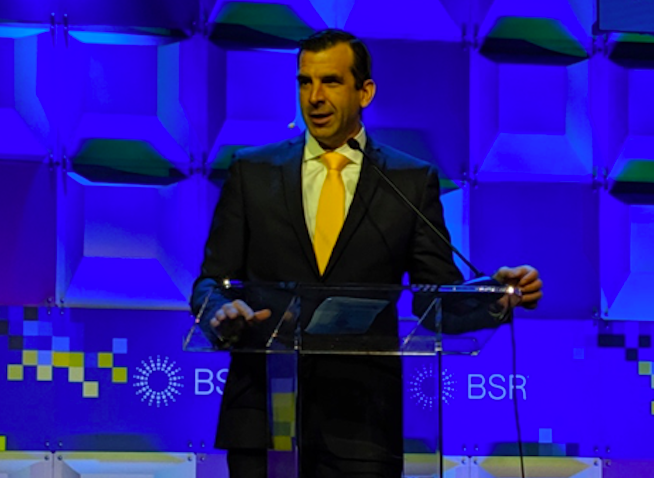
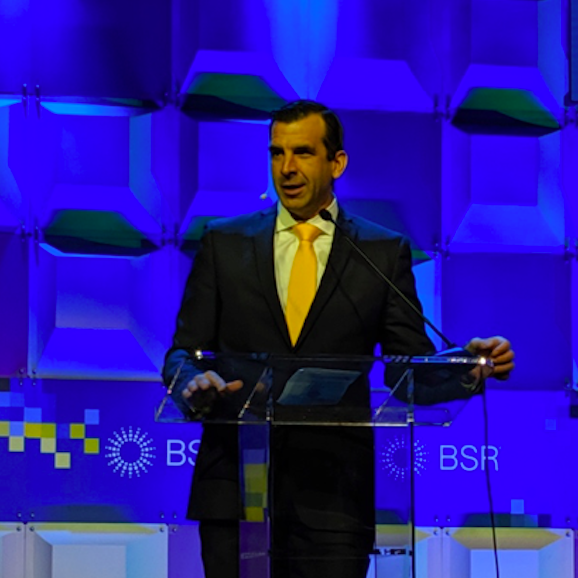
Many of the world’s largest tech giants call Silicon Valley home, but more than 9,000 people find themselves homeless in Santa Clara County each night.
“At a time of such prosperity, that’s a point of shame for all of us,” San Jose Mayor Sam Liccardo told 700 business leaders Wednesday at the annual conference for the nonprofit Business of Social Responsibility (BSR).
The two-term Democrat lauded San Jose as a center of innovation that expands beyond tech to include fruit cocktail and Eggo frozen waffles.
The BSR audience erupted into applause when Liccardo called out Cisco CEO Chuck Robbins for starting a trend when the San Jose-based networking giant committed $50 million to end homelessness in Santa Clara County in five years.
“I’m grateful that he really started what has been an incredible wave of corporate commitments since,” said Liccardo, adding that Silicon Valley Housing Trust is putting the funding to work.
Other companies that have donated tens of millions of dollars to affordable-housing initiatives in the notoriously pricey Bay Area include Facebook, Google, LinkedIn and Salesforce.
While acknowledging “there’s no app to solve homelessness,” the mayor gave an enthusiastic review to several technology platforms leveraging their ability to reach an at-risk urban population:
- Mastercard’s “Cash for Trash” platform gives people who tidy up city homeless encampments a card loaded with money to buy food and living necessities. “We’re grateful to Mastercard for stepping up,” said Liccardo.
- IBM worked with the city of San Jose’s housing department to develop an online rent registry to track whether rental prices are compliant with city rent control policies.
- eBay is helping high school students make smart decisions to increase the likelihood they will attend college. A pilot project, San Jose Promise, deposits virtual scholarship dollars that can convert to actual college scholarships. Incentives work better than lectures, said the mayor.
- Airbnb’s “Open Homes” disaster response program was launched in San Jose, allowing those displaced by flooding in San Jose to stay in vacant rental units. Similar work is under way to address the growing issue of college homelessness, said Liccardo.
Also at BSR, a new survey revealing a dramatic rise in companies that cite climate change as a “very significant” sustainability focus, 52 percent in 2019 versus 14 percent last year. Beyond climate change top focus areas are ethics and integrity, and diversity and inclusion, according to the State of Sustainable Business in 2019, produced by BSR and GlobeScan.
In her commentary about the research, BSR Chief Operating Officer Laura Gitman said CSR has matured significantly since the inaugural research study in 2008.
“It would have been inconceivable (in 2008) for influential corporate leaders and major investors to engage in a very public, candid, and existential conversation questioning the future viability of capitalism, the foundation of our economic and social systems for the past three centuries,” Gitman said.
“We see influential CEOs declaring that ‘capitalism as we know it is dead’ and calling for a new capitalism that values purpose alongside profit. The CEOs of the Business Roundtable have essentially called for a redefinition of the purpose of a corporation, embracing a form of ‘conscious capitalism’ in which the need to deliver value to all stakeholders has surpassed the previously unchallenged primacy of shareholders,” she continued.
Photo credit of San Jose Mayor Sam Liccardo: Dave Armon
Spotlight on MLM and Pyramid Schemes: Brand Risk Is A-Plenty

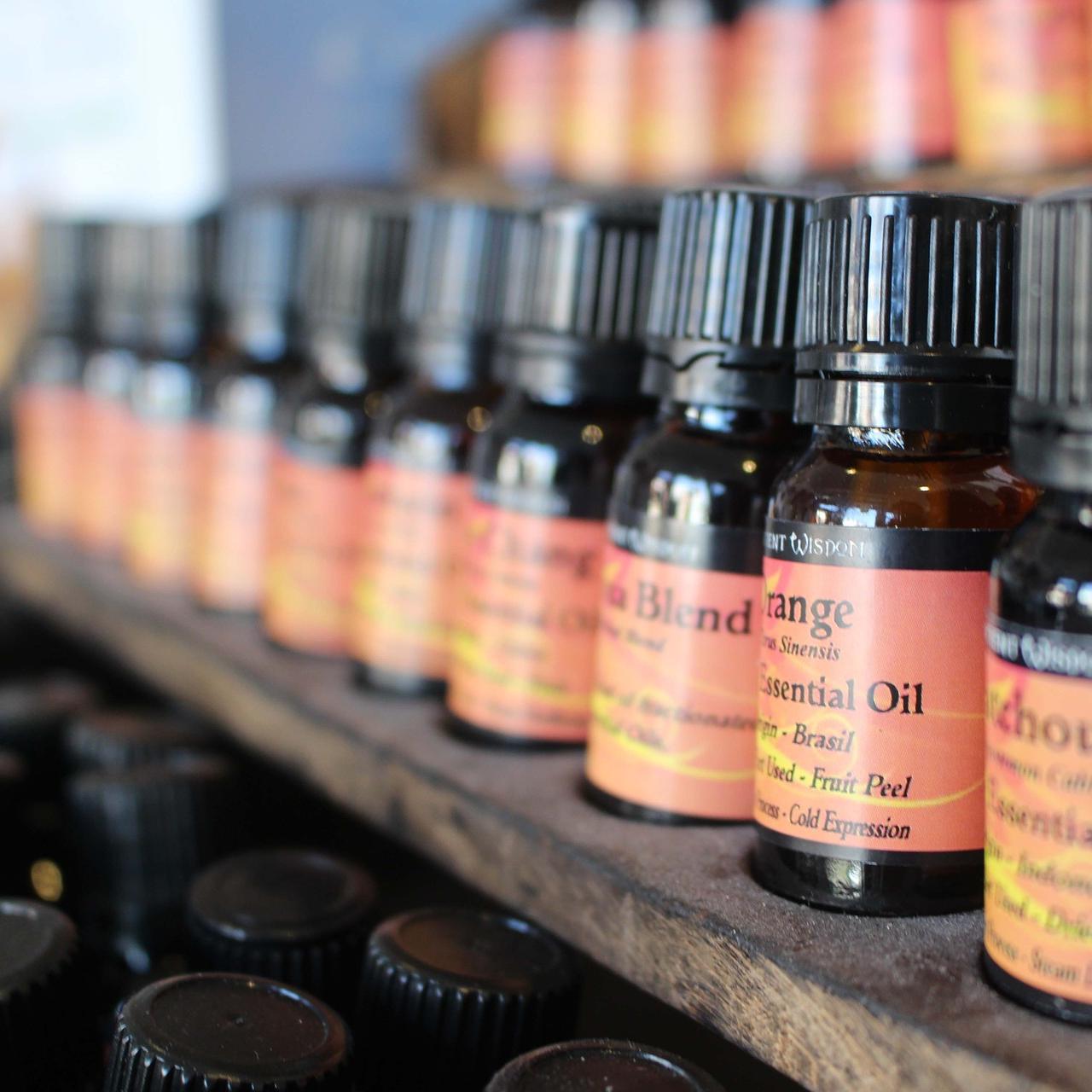
When the leading cosmetics manufacturer Coty acquired a 60 percent share in the multilevel marketing company Younique in 2017, the $600 million deal looked like a good opportunity for a legacy brand to ride the coattails of startup magic and social media sparkle. Barely two years later, Coty has shed its interest in the company for a reported $84.5 million. The loss was a steep one on paper. However, considering negative publicity over MLM and pyramid schemes akin to Younique in recent days, overall the decision is a win for Coty’s brand reputation — and a warning signal for other leading brands.
What is the problem with MLMs?
As defined by the Federal Trade Commission, multilevel marketing (MLM) involves selling products to family and friends and recruiting others to do the same to within their circle of acquaintances.
Though not all MLMs are pyramid schemes, even a legitimate MLM can easily be a waste of time — or worse — for those who join.
According to the FTC, “Most people who join legitimate MLMs make little or no money. Some of them lose money.”
To compound the problem, it can be difficult for the general public to distinguish between a legitimate MLM and an illegal pyramid scheme.
The FTC observes that “people who become involved in an illegal pyramid scheme may not realize they’ve joined a fraudulent venture, and typically lose everything they invest. Some also end up deeply in debt.”
Coty drops MLM like a hot potato
With that in mind, Coty’s focus on brand reputation in the MLM area comes into sharper focus.
Last week, the Wall Street Journal took note of Coty’s leap into — and out of — Younique. Reporter Dave Sebastian linked the decision to drop Younique specifically to the MLM model, writing that "executives have said that the business model, which relied on recruiting 'presenters' to sell products to friends, family and others, ultimately proved a poor fit.”
Coty executives may have also taken note of red flags raised last June, when reporter Amelia Tate of The Guardian took a deep dive into Younique’s business model and that of other MLMs.
Tate wrote that fraudulent or not, MLMs tend to recruit people who are vulnerable to exploitation.
“Many people who join MLMs have disabilities, or poor health, and are unable to work full-time,” Tate wrote. "Those who sign up are taught to target new and single mothers.”
More trouble for MLMs
Last week, Forbes reporter Lisette Voytko took stock of the MLM situation overall. Aside from Coty’s decision to ditch Younique, she highlighted several MLMs that have recently gotten into hot water with the FTC.
The list includes hefty fines paid by AdvoCare and Herbalife and lawsuits faced by LuLaRoe.
President Trump and his family have also been drawn into the MLM mess. Voytko’s list includes a July 2019 ruling in federal court that enabled legal action to move forward against three Trump-related MLMs that operated between 2005 and 2015.
The Trump name is already associated with considerable brand risk. Renewed publicity over the family’s involvement in allegedly fraudulent MLMs only adds fuel to the fire.
Canary in the MLM coal mine: Neora/Nerium
Adding to the timeliness of the Coty decision, Voytko also mentions a new lawsuit filed by the FTC against the MLM Neora, formerly known as Nerium.
Announced on Nov. 1, the FTC lawsuit alleges that Neora “operates as an illegal pyramid scheme and falsely promises recruits they will achieve financial independence if they join the scheme.”
In the lawsuit, FTC spells out exactly why people joining Neora/Nerium and other MLMs are at financial risk, regardless if any illegal activity is involved.
“Nerium allegedly incentivizes recruits to make a substantial upfront investment in Nerium products,” the FTC explained. “And then commit to additional product purchases each month.”
Participants can quickly incur other costs. For example, some MLMs require participants to pay for training courses and seminars. Others, like Younique, charge participants on a regular basis for maintaining their status as account holders.
If that all sounds sketchy, it is. However, none of it is necessarily illegal until it crosses a line described by FTC.
“Participants in legitimate multilevel marketing companies earn money based on actual sales to real customers, rather than recruitment,” explained Andrew Smith, Director of the FTC’s Bureau of Consumer Protection. “But pyramid schemes depend on recruitment of new participants to pay out to existing participants, meaning that the vast majority of participants will ultimately lose money.”
Of course, there had to be a Facebook angle
Not that all roads lead to Facebook in the area of brand risk, but in recent years the social media site has been called to account numerous times for its business practices and for its role in spreading and amplifying objectionable online behavior, including (but not limited to) hate speech as well as conspiracy theories, propaganda and other forms of deception.
Facebook does enforce guidelines for advertisers regarding false claims and other issues, but advertisers are increasingly deploying users to post promotional content that skirts the guidelines.
That appears to be the case with the MLM model described by Tate in The Guardian.
“Social media means MLM presenters now sell to – and recruit from – the entire world,” explained Tate, noting that participants on the higher rungs of the ladder routinely write posts on Facebook promising “'rocking’ sales, ‘instant’ pay and the chance to run ‘your own business.’”
Although MLM participation in the U.S. has been declining, MLMs experienced a strong growth spurt in the United Kingdom beginning about five years ago.
More than 425,000 people in the U.K. currently are involved in MLM on at least a casual basis, and many rely on social media as their main channel. Of particular interest is the increasing use of Facebook Live in the U.K. to broadcast “selling parties,” according to a study cited by the accounting firm PRB.
Whether or not the MLM renaissance comes to the U.S. remains to be seen.
Meanwhile, all things considered, the Facebook connection adds yet another element in favor of Coty’s decision to take the long view, absorb the loss and protect its brand from a business model that is all too susceptible to fraud and abuse.
Image credit: Pixabay
For Veterans, There’s Hiring - And Then There’s Meaningful Hiring


Many leading companies have recognized that veterans enter the civilian workforce with a set of valuable skills. However, not all veterans hiring is the same. A new study by LinkedIn suggests that companies are missing opportunities to hire veterans into positions that match their skills and experience, and that enable them to move up the corporate ladder.
Hiring veterans: more than an employment rate problem
LinkedIn developed the new Veteran Hiring Report, released last week, to explore how its data could provide could provide insights into a disturbing pattern that has emerged in recent years.
Though the overall rate of veterans’ employment has improved along with the general employment rate, veterans still face many barriers to advancement up the corporate ladder.
As described by LinkedIn, the problem could be rooted in a view that military experience does not provide the kind of training that leads to career development in a corporate environment.
The statistics, though, tell a different story.
In the new report, LinkedIn surveyed users on its platform who identified as being veterans, and who had a bachelor’s degree or higher.
The survey found that veterans with bachelor’s degrees have almost three times the work experience of their civilian counterparts. Veterans are also 160 percent more likely than nonveterans to have a graduate degree or higher.
Once in a civilian job, veterans are also 39 percent more likely to be promoted earlier, and they stay with their company more than 8 percent longer than nonveterans.
Those longer stays are significant, considering the extent to which some companies invest in on-the-job training and education.
A step down into civilian employment
Unfortunately, many companies seem to be unaware of these advantages.
According to the study, veterans entering the workforce receive far more recruiter messages than civilians, but they don’t win employment at a corresponding rate. The report found that many companies hire veterans at a lower rate than civilians, despite the stepped-up recruiting.
Many companies also fail to perceive the value of the skills and experience that veterans possess. Compared to their position in the military, veterans are significantly more likely — 70 percent, according to the LinkedIn report — to get an initial job below their skill level.
Veterans and the race for talent
The problem may also cut both ways. Employers may not fully realize the depth of talent in the pool of job seeking veterans. Meanwhile, LinkedIn suggest that veterans may not fully grasp their potential for employment in fields outside of law enforcement and other familiar military-to-civilian pathways.
It is also possible that veteran-friendly fields are skewing the results somewhat, by aggressively recruiting veterans who might otherwise explore other opportunities.
The burgeoning solar industry, for example, has been ramping up the pipeline from military service to solar jobs. Part of the strategy is to offer training to members of the armed services at their bases, while they are still on active duty. That includes the “Solar Ready Vets” program, launched in 2016 with funding from the U.S. Department of Energy.
The wind industry has been especially successful in recruiting veterans. The American Wind Energy Association (AWEA) notes that its members employ veterans at a rate 67 percent higher than the national average.
Getting beyond the basics
AWEA highlights the fact that its members employ veterans throughout the corporate structure. Still, when making the pitch for hiring veterans, the organization focuses on basic skills.
That includes teamwork, experience with heavy equipment, a clear sense of mission, and possessing the ability to work outdoors and in challenging physical environments.
What is missing is the education, training, and experience that can groom veterans — or potentially qualify them — for upper management positions.
With that in mind, the LinkedIn report recommends that employers “look beyond the idea that you have ‘jobs for veterans.’”
Among other guidance, LinkedIn suggests that employers take a close look at their hiring practices and identify bottlenecks that exclude veterans. The report also exhorts employers to focus on nuances like “functional dispersion, full time vs. hourly or skilled roles [and] seniority.”
Education is the key
Some companies are already adopting a more sophisticated view of veterans’ hiring.
JetBlue provides one good example. The airline began focusing on veterans in 2012 with a relatively basic approach, and now those efforts are now dovetailing with the company’s new JetBlue Scholars college degree program. The initiative provides assistance and mentoring for adult employees who left a bachelor’s degree program before graduating.
Any JetBlue employee can apply to the program, but it is broadly tailored for veterans. The company’s educational partner is New Jersey’s Thomas Edison State University, which has extensive experience in veterans' services. That includes transferring aspects of military service into certified college credits, enabling participants to complete their degrees more quickly and economically.
The program launched in 2016 and it has already motivated JetBlue to take an additional step. Last summer, the company announced that it is offering support for a Master’s degree, with the specific aim of enabling employees to advance their careers.
In addition, Walgreens stands out for how it has been recruiting military veterans – and for good reason. Veterans come into the civilian labor market with an impressive set of work skills that can first translate into store aisles and on to top management positions.
The technology angle
There are other signs that employers are becoming more sophisticated in their approach to veterans’ hiring.
Last spring, Military Times listed 200 private sector companies vying for recognition in its list of “best places to work” for veterans.
The list includes companies in the energy field, but there is ample variety. For example, First Data Corp. nailed down the #1 slot due to its “best-in-class” education resources and career opportunities for veterans.
The #4 slot went to a relatively small company called Intuitive Research and Technology Corp., which Military Times cited for its focus on veterans’ recruitment and its 30 percent rate of veterans’ employment.
The military-serving banking and insurance company USAA came in at #5, with Military Times noting that “the banking and insurance powerhouse has veterans in the positions of chief executive officer, chief of operations and president of USAA Federal Savings Bank.”
Companies like these are tuned into the fact that today’s military is a high tech, data-intensive environment that can provide veterans with training, skills, and insights that parallel the broader technology transformation of the U.S. economy.
The bottom line: As LinkedIn suggests, companies that have been skating on their recruitment efforts of veterans should step it up and take a good look at what the leaders are doing.
Image credit: U.S. Air Force Tech. Sgt. Keith Brown/Wiki Commons
Leave or Stay, We’ll Always Have the Paris Agreement
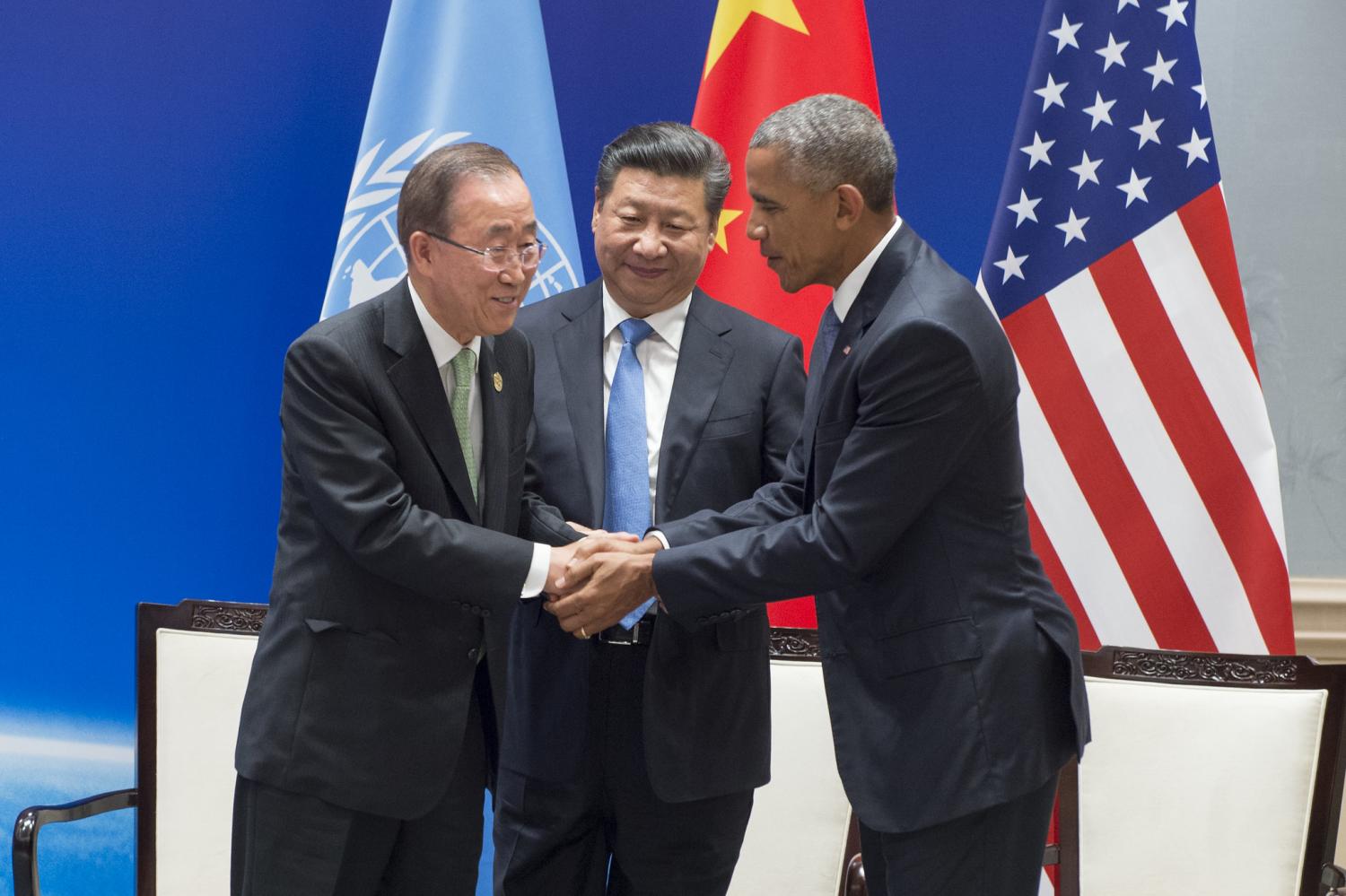

The United States federal government, under President Trump, has officially begun the one-year process to have the United States fulfill his promise to leave the Paris Agreement. This was predestined by his earlier announcement back in June 2017 that the U.S. would do so. The process would end literally one day after the next U.S. presidential election. If Trump is reelected, then the withdrawal would be a certainty. Virtually all of the candidates vying to be the Democratic nominee, including front-runners (at this time) Elizabeth Warren, Joe Biden and Bernie Sanders, have made the commitment to reverse this policy.
Leaving the agreement would be a mistake, I have argued, because the reasons for leaving are not only specious, but walking away from discussions is never a strategy for gaining better terms.
When the Paris agreement was signed, it was a watershed moment, not for the climate, but for human history. With virtually every nation signing on, as I wrote then: “Perhaps even more important than the climate agreement, COP21 has demonstrated our ability to come together as a species to determine priorities and address the critical issues facing us as a species.”
The meeting also introduced the 17 UN Sustainable Development Goals (SDGs) recognizing the inter-relationship between many of the issues, including climate change that face our species (if you need a refresher on what each of the 17 SDGs is about, click here).
What occurred in Paris at the COP21 was a watershed meeting because it demonstrated our ability to agree on the big important issues and come together to set universal goals. We can and should take notice of the importance not just for the global climate, but for all the issues, including those impacted by climate change and the need to address it (such as health, well-being, sustainable economic development, equality, justice, and fighting corruption).
That may be the biggest benefit from COP21 - reminding and reassuring us of the unmatched power of people when we come together and really address the issues.
I hope the U.S. rejoins the right side of history – for the benefit of our country – and all nations. Otherwise, it will remain a bittersweet memory (as alluded to in the title). Doing otherwise may make some people feel “good” but it certainly does nothing that could remotely be considered “great.”
Image credit: United Nations/Flickr
HP’s New Carbon-Neutral Printer: A Sign Of What’s To Come in Sustainable Product Design
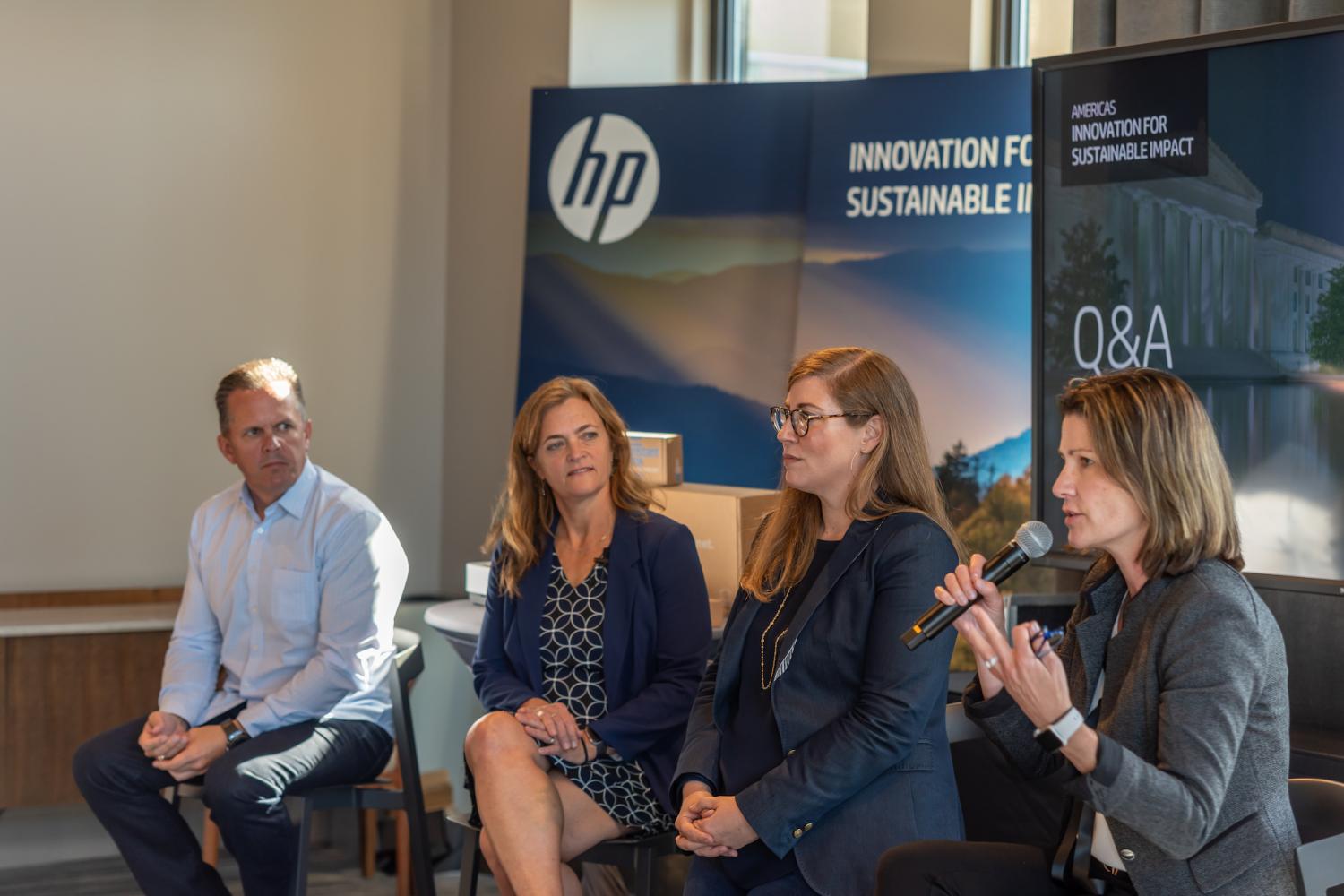

(Image: HP executives discuss the new carbon-neutral printer and the company's long-term sustainability plans at a press junket in Nashville.)
Over the past year, TriplePundit has tracked HP’s increasing use of ocean-bound plastic—or plastic recovered from ecosystems and waterways before it can reach the ocean.
“We've deliberately worked across our businesses and our functions to think about the future as an interconnected ecosystem,” Nate Hurst, chief sustainability and social impact officer for HP, said at the 3BL Forum last week.
In June, the company released the Elite Display, which it bills as the first computer monitor made with ocean-bound plastics, sourced from self-employed refuse collectors in Haiti, who earn a living wage by removing plastic from the outdoors and selling it into the reuse market.
Three months later, it unveiled the HP Elite Dragonfly laptop, the world’s first PC built with ocean-bound plastics. Half of all plastic used in the computer is recycled, including 5 percent ocean-bound plastics from its supply chain in Haiti.
And last month, HP invited tech professionals and media to its recycling center in Nashville to show off its newest release: the Tango Terra printing system. The printer itself is made from 30 percent recycled plastic, and the system is certified as CarbonNeutral by Natural Capital Partners.
“This is our first certified carbon neutral product,” Ellen Jackowski, global head of sustainability strategy and innovation for HP, told reporters in Nashville. “This printing system really establishes the vision of where we're headed across our entire portfolio.”
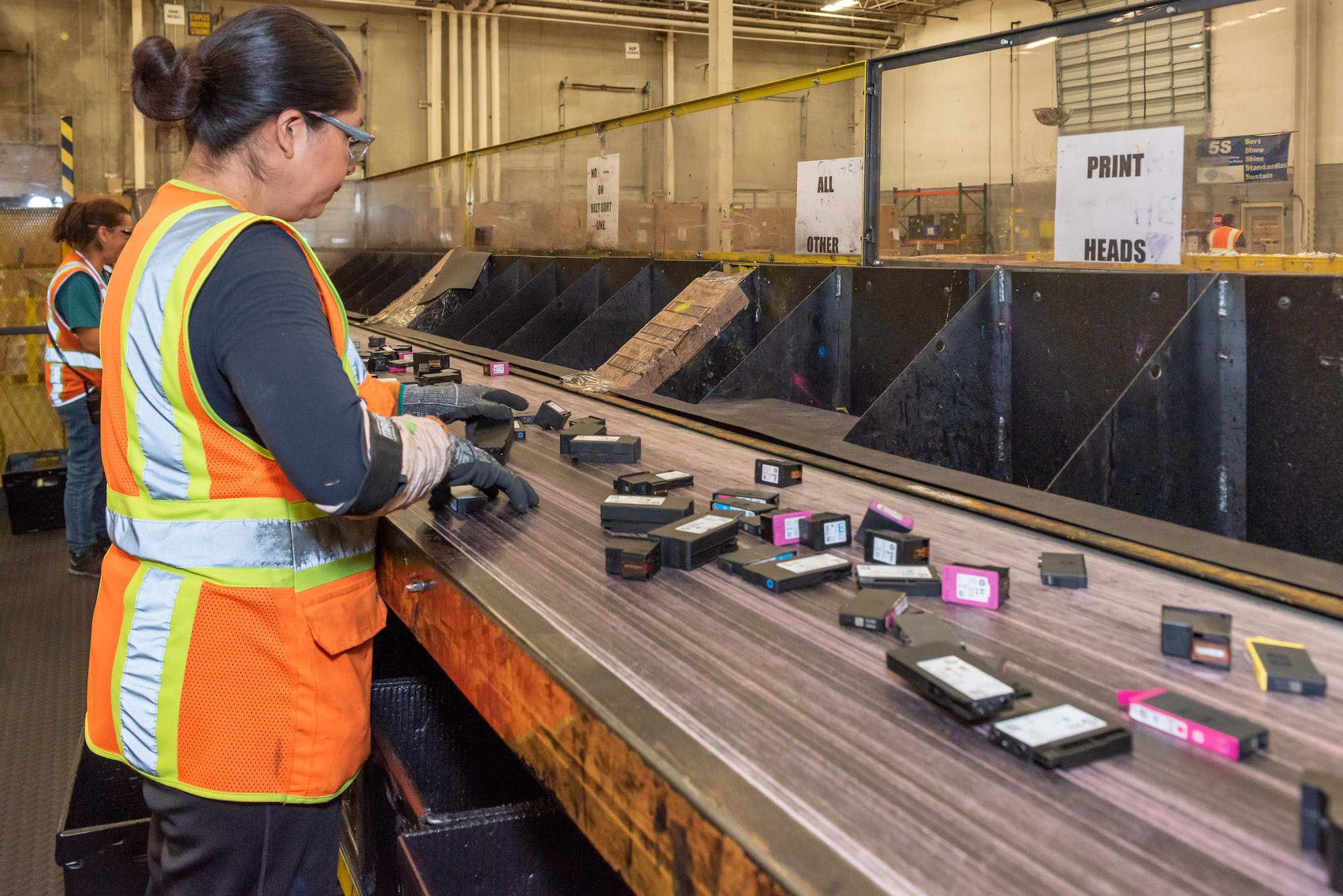 (Image: Manual sorting complements the high-tech recycling equipment at HP's ink cartridge recycling facility in Nashville.)
(Image: Manual sorting complements the high-tech recycling equipment at HP's ink cartridge recycling facility in Nashville.)
Building a closed-loop system
HP has recycled old ink cartridges through its Planet Partners program since 1987. Its team invented a disassembly machine to take the cartridges apart and separate plastic and metal components for recycling. The plastic pieces are fortified with material from recycled plastic bottles and apparel hangers to increase strength before they're turned into new ink cartridges and sold back into the marketplace.
HP now recycles 1 million plastic bottles every day through this process. Through last year, the company has manufactured over 4.2 billion ink and toner cartridges using more than a cumulative 107,000 tons of recycled plastic.
By upcycling these materials for continued use, an estimated 830 million HP cartridges, 101 million hangers and 4.37 billion post-consumer plastic bottles have been kept out of landfills, according to company estimates.
These numbers are surely impressive, but they also represent a complex supply chain that includes a whole lot of transport. Recycled cartridges are mailed back by consumers or collected for free at retail locations like Best Buy, Staples and Office Depot. They’re sent to HP’s recycling plant in Nashville then shipped to Montreal, where they’re combined with recycled plastic from Haiti and around the world before being manufactured into new cartridges.
“Is it really an environmental benefit when you've got all of those logistics and transport involved?” asked Shelley Zimmer, sustainable impact program manager for HP. “The answer is absolutely yes.
"We find that by using recycled plastics in our ink cartridges—including all of those logistics—we reduced the carbon footprint of the plastics by 30 percent, we reduced the fossil fuel usage in that system by 60 percent and we reduced the amount of water usage in the system by 39 percent, compared to using virgin plastics."
 (Image: The HP Tango Terra printer contains 30 percent post-consumer recycled plastic.)
(Image: The HP Tango Terra printer contains 30 percent post-consumer recycled plastic.)
Rising ambition around the circular economy
Having established a closed-loop process for one of its signature products, HP is now looking to increase its ambition by using more recycled plastic and giving it a home in splashier pieces of technology with the potential to draw consumer interest.
All new HP Elite and HP Pro desktop and notebook computers launching next year and after will contain ocean-bound plastics. And the company has committed to use 30 percent recycled plastic across its entire product line by 2025.
“This is a big, bold, hairy goal,” Jackowski said. “We’re not exactly sure how we're going to get there yet. Today we're at 7 percent, so we have quite a lot of work to do.”
Pioneering new collection models
So, why is a 30 percent goal so hard to achieve anyway? The world is lousy with plastic waste—we create around 300 million tons of it every year, roughly the weight of the entire human population.
But it’s not a matter of too little plastic—it’s about how much plastic large users like HP can get their hands on. It’s estimated that only 9 percent of the plastic ever produced has been recycled, and as economics threaten the viability of recycling systems worldwide, this trend appears poised to continue—at least in the near term.
Meanwhile, more companies are getting into the recycled plastic game.
“No doubt, other companies will see the opportunity based on customer demand for more recycled content in products that everyone sells, including our competitors,” Jackowski said. “As the rest of the world starts turning this way, there isn't enough recycling infrastructure to generate the volumes of some of these commitments that companies like HP and others are making.”
With its own recycling facilities in Nashville, which accept ink cartridges and electronics of any brand and recover the components for reuse, HP is already ahead of the game. And by creating new supply chains in regions like Haiti, it’s well positioned to continue building its recycled plastic supply while addressing the social side of plastic pollution and how it affects developing countries.
Of course, that “big, hairy goal” is still a long way off.
“We need to be thinking about how to reinvent our entire supply chain to move away from virgin materials and use more recycled content,” Jackowski said. “And that's what we're doing.”
 (Image: On-pack messaging reminds consumers about the sustainability of the new HP Tango Terra printing system.)
(Image: On-pack messaging reminds consumers about the sustainability of the new HP Tango Terra printing system.)
The new carbon-neutral printing system: A sign of what’s to come at HP
Released last month, HP’s Tango Terra is carbon neutral, from raw material extraction and processing, to printer manufacturing and transportation and all the way up to consumer use—including electricity, paper and cartridges. The system also contains a sample of HP's deforestation-free paper, certified by the Forest Stewardship Council, and an opt-in to its cartridge subscription service, which includes free recycling.
The entire system was designed with sustainability in mind: Inside, it contains no shrink wrap around the printer and instructions are printed on the recycled cardboard package, rather than being included as a separate insert. At end of life, spent cartridges, as well as the printer itself, can be recycled through HP for free. The white recycled plastic, which comprises 30 percent of the Tango Terra printer, is partially sourced from discarded refrigerators.
This type of bottom-up design is the future for HP, its leaders told reporters in Nashville.
“We're thinking about the entire process of what we're selling and how our users are interacting with it,” Jackowski said.
And this move toward sustainability is no coincidence, she said. Last year, HP tied $900 million in revenue directly to its sustainability programs alone and estimates potential revenue at around $20 billion per year from scaling this work.
“Our customers care,” Jackowski concluded. “This is real—and we're facing pressure from our customers. This is part of how we intend to be successful financially long term, and it does have direct business impact.”
Images courtesy of HP
*Travel and accommodations in Nashville were provided by HP. Neither the author nor TriplePundit were required to write about the experience.
Tackling the Decarbonization of Transportation


By now, many of us have heard the statistics and news reports: Organizations need to be moving at a much faster pace to address the global climate crisis and meet the Intergovernmental Panel on Climate Change (IPCC) report’s warning of limiting warming to no more than 1.5 degrees Celsius.
While this information might feel overwhelming, we don’t interpret it that way for two reasons. First, there has already been good progress made reducing Scope 2 emissions with increased investment in renewable energy. From utilities taking action to switch to cleaner fuels for their power plants to companies stepping up to invest in increasingly cost-competitive renewable electricity, emissions from electric power usage have been on the steady decline. Next, we know exactly where we need to turn our collective efforts to have the biggest impact on reducing GHG emissions: the transportation sector. Put simply, we have the map and know the road to take—now it’s a matter of mobilizing and taking action.
The road to reducing transportation emissions
In 2016, the transportation sector surpassed the power sector as the larger emitter of greenhouse gasses (GHG) in the U.S (responsible for 27% of emissions), driven by changes in both consumer and business market behavior. A confluence of activities is resulting in a larger transportation carbon footprint: the growth of e-commerce (including international shipping), increased business travel as a result of globalization and more.
While solutions to transportation emissions are within sight, they come with challenges. Most will take time to become fully practical to implement on a large scale and will require a significant amount of financial investment and policy support to get there. The good news is that progress has already been made in a few notable areas, including fuel efficiency (vehicle manufacturers have made significant improvements in fuel economy) and advanced aerodynamics. However, the solution that will have the biggest impact on emissions is undoubtedly the transition to low-carbon transportation fuels (including renewable electricity).
Incentives can accelerate the transition to low-carbon fleets
Although low-carbon fuels, such as renewable power and renewable natural gas (RNG), are gaining traction, the transition to these fuels will take time. New vehicles and fueling infrastructure require large capital investments that are hard to justify before the billions of dollars of existing vehicles and infrastructure begin to wear out. There are, however, some levers available to help support the acceleration of these transitions, such as incentive programs like California’s Low Carbon Fuel Standard (LCFS) and the federal Renewable Fuel Standard (RFS). Market-based incentive programs were designed with the goal of decarbonizing the transportation fuel mix and can actually help fund fleet decarbonization and infrastructure roll out, which may otherwise be cost-prohibitive to many businesses.
California, Oregon and British Columbia have incentive programs for low-carbon transportation fuels, and several other states and provinces are considering them. California’s program requires providers of petroleum-based fuels to reduce the carbon intensity of their fuel mix by 20 percent by 2030, as compared to a 2010 baseline. The LCFS incentivizes low-carbon fueling in California by allowing alternative fuels, such as electricity or renewable natural gas, to generate credits which can then be sold in the LCFS market. Organizations already engaged in low-carbon fueling may be eligible to register those activities under what are referred to as LCFS “pathways." For organizations that have yet to transition to low-carbon fuels, the LCFS can act as a financing mechanism to help fund the transition costs.
The role of carbon offsets
In addition to incentive programs, carbon offsets are another market mechanism that play a role on the road towards decarbonizing transportation. While they are not the end goal, carbon offsets can provide a funding mechanism for programs to decarbonize auto manufacturing, recycle vehicle waste or support the rollout of EV or biofuel infrastructure.
We have a map of viable pathways for decarbonizing transportation. And there are many examples of organizations already taking action and mobilizing others to follow—but we’re going to need many more to start down this road if we’re going to make a true impact on lowering our transportation emissions. We hope that the growing availability of market-based incentives mentioned above encourage your organization to step up and take the wheel.
This article series is sponsored by 3Degrees and produced by the TriplePundit editorial team.
Image credit: Pexels